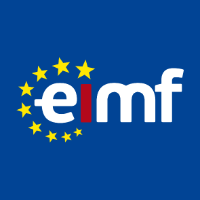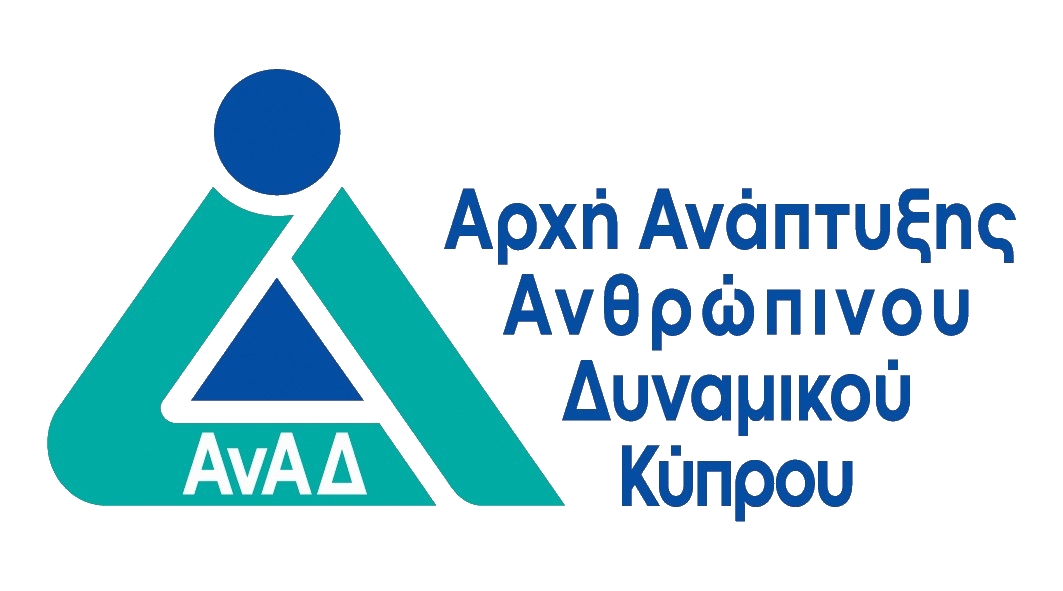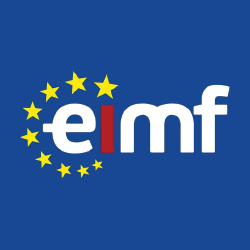
HRDA Vital Importance: Securing the Future – Innovative Succession Planning with AIMS International Methodology
- Οργάνωση/ Διοίκηση/ Ηγεσία - Ανθρώπινο Δυναμικό (HR)

ΠΕΡΙΓΡΑΦΗ
The programme is approved by the Cyprus Human Resource Development Authority (HRDA) as a “Vital Importance” training programme. HRDA Vital Importance programme fees are fully subsidised by the HRDA for up to three (3) eligible participants per business entity.
Course Overview
This 18-hour programme – comprising 14 hours of classroom training and 4 hours of inhouse consultation – aims to equip business professionals with the tools and knowledge to design and implement effective succession planning strategies that align with organisational goals.
Participants will gain expertise in crafting customised succession approaches, identifying high-performing talent, and fostering leadership continuity. The programme emphasises the critical importance of succession planning for long-term organisational success, addressing key challenges faced by Cypriot companies operating locally and/or internationally such as talent retention, leadership alignment, operational risk mitigation, and fostering diversity in leadership roles. By incorporating AIMS International Methodology, the programme aims to bridge the prevalent gaps in succession planning across organisations in Cyprus ensuring readiness for both planned and unexpected leadership transitions.
The programme will also provide practical training and tools to support participants in aligning succession planning with strategic business priorities. Participants will develop hands-on skills to design comprehensive succession plans, nurture future leaders and embed best practices for talent development within their organisations. The programme promotes a culture of continuous learning, enabling companies to enhance resilience, adapt to future challenges, and sustain performance.
Through interactive exercises and coaching, professionals will enhance their ability to make informed decisions about leadership development, fostering growth and ensuring organisational continuity in an evolving business environment.
ΣΚΟΠΟΣ ΣΕΜΙΝΑΡΙΟΥ
Learning Objectives
Understanding Succession Planning
• Describe the Strategic Succession Planning Methodology, its parameters, and key tools.
• Identify the business forces driving the need for succession planning.
• Assess current and future talent needs.
• Explain the innovative tools and techniques for implementing succession planning.
• Evaluate the current status of the business and its talent needs.
• Identify high-potential employees (HiPOs) and key talent.
• Describe talent development programmes and actions.
• Identify potential risks and challenges in succession planning.
• Recognise when there is an immediate need for succession planning.
• Apply the appropriate Succession Planning Methodology and tools for the organisation.
• Set short-term and medium-term objectives for measuring success.
• Conduct talent assessments and develop succession plans for key roles.
Managing Stakeholders and Measuring Success
• Recognise and manage key stakeholders involved in the process.
• Select tools to measure progress and success and develop engagement strategies.
• Monitor and assess progress effectively.
• Address internal barriers and implement effective communication strategies.
• Organise, monitor, and measure progress throughout the process.
• Manage stakeholder relationships and ensure clear communication with key parties.
• Align succession planning with strategic targets, including DEI goals.
• Recommend talent management programmes suited to the organisation’s needs.
Advancing and Adapting Succession Planning
• Drive and perform activities related to Strategic Succession Planning.
• Appraise and defend the Strategic Succession Planning methodology.
• Foster a positive, open-minded attitude towards succession planning.
• Embrace challenges and take calculated risks in talent identification, development, and succession.
• Maintain a proactive and adaptable mindset to navigate changing business needs and equip the organisation with necessary skills.
Training Outline
Introduction
- Analysis of the objectives and roadmap of the programme
- Why succession Planning?
Identify the Strategic Needs and Internal Talent
- Introduction to the “AIMS International Strategic Succession Planning Method”
- Define Succession Planning objectives. Linked them to Business Vision and Strategic Priorities. Use of:
- Strategic Alignment Matrix
- Stakeholder mapping
- Identify and analyse critical positions:
- Job analysis templates
- Competency frameworks per level. Actions and methods to develop Competency Frameworks
- Assess and identify Current Talent in the organisation (HiPOs, Talent Pool and Potential Successors).
- Use of:
- 9-Box Grid for talent review
- 360 Degree Feedback
- Assessment Development Centers
- Use of:
- Assess and identify Current Talent in the organisation. Use of:
- Talent Development Assessment Matrix
- Succession Planning Map
Case Study and Discussion
- A suggested model for succession planning – The Toyota case
- Competency-Based Succession Planning
Practical Exercise on:
- 9-Box Grid for talent review
- 360 Degree Feedback
- Assessment Development Centers
- Talent Development Assessment Matrix
- Succession Planning Map
Mini knowledge evaluation
Incorporate Diversity, Equality and Inclusion (DEI) in the process
- Diversity Metrix
- Mentorship
- How to Incorporate DEI in your organisation
Leverage and Engage
- Communicate succession plan internally
- Engage the talent in the process
- Talent engagement tools
- Engage the talent in the process
- Talent affiliation tools
Develop and implement Individual Development Plans
- Use of the 3 ‘Es’ in talent development:
- Explanation, Exposure, Experience
- Individual Development Plans (IDPs) for successors
- Available tools
- Action to talent
Monitor and Measure Progress
- Use of:
- A Succession Dashboard
- Key Performance Indicators, HR Information Systems
Review and Update Succession Plans Regularly
- Use of:
- Succession Plan Review Checklist
- Employee feedback tools.
Challenges, Barriers and Actions to mitigate them
- Possible Risks
- Evident Challenges
- Actions to mitigate them
Practical Exercise
- Practical Exercise on a well-known Talent Management Succession Planning Tool
Discussion
- Share of experiences
Next Steps – Plan for the inhouse In-house Training/Advisory Session
ΣΕ ΠΟΙΟΥΣ ΑΠΕΥΘΥΝΕΤΑΙ
The programme is ideal for all professionals who lead organisations, manage people within departments, units or teams within all industry sectors and organisational functions, as well as those who run their own businesses and practices. Some positions would include:
- CEOs
- General Manager
- Directors
- Departmental Heads
- Chief HR Officers and HR Directors
- HR Heads and HR Managers
- Heads and Managers of Learning and Development
- HR Business Partners
- Decision makers
ΠΕΡΙΣΣΟΤΕΡΕΣ ΠΛΗΡΟΦΟΡΙΕΣ
Training Style
The programme is interactive in nature and participants will be actively involved, using their own experiences and challenges to reinforce and adapt the new knowledge and skills to their own reality, as well as examples, case studies, tools and simulations provided by the training team to be tailored and applied to their business needs. The use of assessments, tools and reflective exercises will also allow participants to increase their awareness and provide opportunity for reflection and discussion.
The training sessions will combine elements of PowerPoint presentations, open discussions, case studies, audio/visual material and experiential exercises/tools.
In-house Training /Advisory Session
Upon completing the 14-hour in-class training programme, participants will engage in a tailored 4-hour in-house session offering focused guidance, advice, and training to address the specific needs and challenges of both the participants and their organisation.
This session will include practical, hands-on exercises to evaluate their organisation’s current succession planning maturity, design a tailored strategic succession process customised to their unique business needs, and effectively apply the AIMS International Strategic Succession Planning Methodology.
Additionally, participants will have the opportunity to explore how robust succession planning can support expansion efforts (locally or internationally) enhancing global competitiveness and ensuring long-term organisational sustainability.
CPD Recognition
This programme may be approved for up to 18 CPD units in Personal and Professional Development. Eligibility criteria and CPD Units are verified directly by your association, regulator or other bodies with which you hold membership.
Πληροφορίες Εκπαιδευτή
Αναλυτικό Κόστος Σεμιναρίου
Για Δικαιούχους ΑνΑΔ
- € 1800.00
- € 1800.00
- € 0.00
- € 0.00
- € 0.00
Για μη-Δικαιούχους ΑνΑΔ
- € 1800.00
- € 0.00
- € 342.00
- € 1800.00
- € 2,142.00
ΠΡΟΓΡΑΜΜΑ ΣΕΜΙΝΑΡΙΟΥ
Τετάρτη - 12 Μαρτίου 2025
Ώρα
09:00 - 17:15
ΕΚΠΑΙΔΕΥΤΗΣ:
Αργυρώ Δημητρίου ΛοϊζίδουΤοποθεσία:
EIMF (Λευκωσία)
 Ελληνικά
Ελληνικά  English
English



 Αγγλικά
Αγγλικά
 18 ώρες
(
2 μέρες
)
18 ώρες
(
2 μέρες
)




























